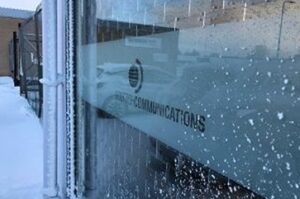
Security and surveillance must be reliable year-round, even in cold, dark, and damp conditions. Winter can present unique challenges for security systems, including extreme cold, moisture, and visibility issues. Preparing sensors and detectors for these conditions is essential for maintaining optimal performance. Here the experts at Optex America suggest how advanced technology and accessories can help ensure security systems stay operational throughout the season.
Optex detectors are designed to perform consistently, whether it’s summer or the harshest winter, thanks to advanced detection capabilities and robust components.
For example, the Redwall SIP outdoor series features an intelligent PIR detection system that automatically adjusts sensitivity based on ambient temperature and illumination levels, ensuring reliable performance even as conditions fluctuate. Additionally, Optex’s dual-tech sensors utilise a ceramic PCB and gold-plated antenna for enhanced durability in humid or condensation-prone environments.
For robust perimeter protection, the Redscan Pro and Redscan mini-Pro Lidar sensors are equipped with environmental resistance settings to reduce false alarms and maintain accuracy during harsh weather conditions, such as snow, fog, or heavy rain.
The settings include three options:
● Disabled: Short response time with a higher chance of false alarms in severe conditions.
● Enabled (Default): Balances high detection accuracy with a reduction in false alarms due to fog or snow.
● Enhanced: Maximizes false alarm reduction in extreme weather, though response time may increase.
The Redscan Pro’s versatile range and the mini-Pro’s compact design make them suitable for various applications, from large perimeters to smaller, more confined spaces. Both sensors deliver reliable detection and can be customised to meet the specific needs of your environment.
According to the company, most Optex detectors can withstand temperatures as low as -20°C to -25°C. For colder regions, heaters can be added to maintain functionality. For example, key options include:
● RLS-LWVH Heated Lens for Redscan Pro: This accessory allows the Redscan Pro to operate down to -40°C. It is compatible with the RLS-50100V and RLS-3060V models and is easy to install.
● SIP-HU Heater for Redwall SIP Series: Ensures the sensor functions normally down to -40°C. The heater remains on constantly to maintain optimal performance.
● HU-3 Heater for IR Beams: Suitable for hardwired models of the AX and SL Series, ensuring IR beams remain functional in extremely cold conditions. For long-range SL beams, it’s recommended to install two heaters per unit.
● Preventing snow accumulation: Accessories like the SIP-Minihood and SIP-Midihood protect PIR detectors from snow buildup, which can affect sensor performance. They are compatible with various SIP models.
Maintenance tips for winter
● Install and inspect correctly – When installing sensors, use mount screws, gland plugs, and rubber seals to prevent water ingress. Position cable glands downward to minimize moisture exposure.
● After heavy snowfall – Inspect sensors for snow accumulation and remove it, especially from the lens. Clean the detector lenses with a soft cloth and water or antistatic foam cleaner to maintain detection accuracy.
● Monitoring heater performance – For detectors equipped with heaters, check power consumption to ensure they are functioning correctly. This can prevent issues before temperatures drop significantly.
These steps and accessories can help retain optimum performance even during the harshest winter conditions.











